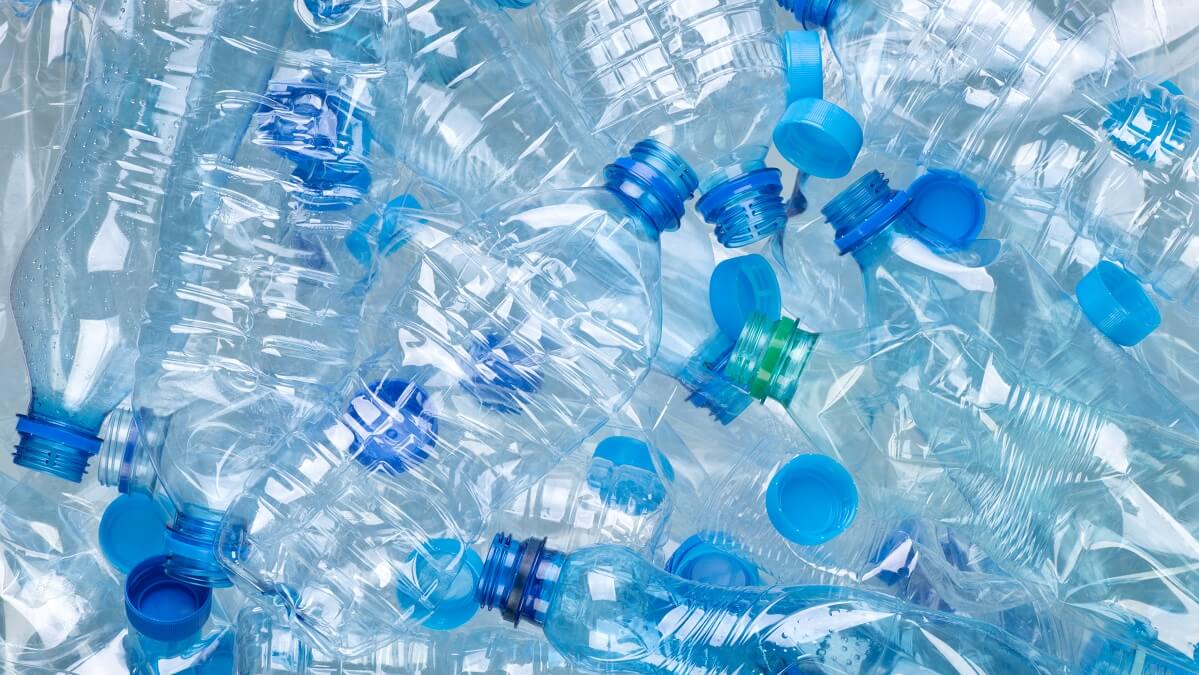Most plastic water bottles are only intended for single use. However, for convenience, many people still refill them now and again.
What are these bottles made of?
Most plastic bottled water bottles are composed of polyethene terephthalate (PET), a thermoplastic polymer resin. This polymer is commonly used in food packaging as it is lightweight and durable.
Characteristics of PET also include strength, excellent chemical resistance, good elasticity, and stability over a huge range of temperatures (−60° to 220°C).
While most plastic polymers are only food-safe and FDA-compliant in their virgin and unrecycled state, recycled PET is an FDA-approved food-safe plastic polymer.
Leaching in plastic water bottles
Studies have shown that bottles of recycled PET can contain higher concentrations of chemicals than bottles using new ‘virgin’ PET, prompting concerns over contamination during the recycling process.
Over time, these PET bottles can leach food contact chemicals (FCCs) into the water, especially if they are exposed to heat or sunlight.
“We found these chemicals can come from various sources, such as the catalysts and additives used during production and degradation during PET production, and degradation that can happen across a bottle’s lifecycle,” said Dr Eleni Lacovidou, a lecturer from Brunel’s Centre for Pollution Research and Policy, who led the study.
Food contact chemicals
FCCs are found in food containers and packaging and include phthalates, BPA, and antimony.
Phthalates are a group of chemicals that are used to soften plastics and make them more flexible. If the bottle has been exposed to high levels of sunlight or heat, both phthalates and antimony can leach into the water. Phthalates have been linked to reproductive problems in adults, while ingestion of antimony can lead to liver and kidney damage and, in some cases, even cancer.
BPA is an endocrine-disrupting compound and has been shown to increase the risk of obesity, and diabetes. It impairs hormone levels by acting as a substitute for oestrogen and causing an increased risk of cardiovascular disease.
Safety precautions
- Fill the bottle with warm water and rinse thoroughly to remove any remaining liquid. Make sure not to use bottles that contain sugary drinks as these can lead to the growth of microorganisms.
- Add a small amount of dish soap or any alkaline cleaner and shake the bottle vigorously and let it sit for a few minutes.
- Using a bottle brush, scrub the bottle, being sure to clean the neck and bottom of the bottle as well.
- Finally, rinse the bottle again with warm water to remove all the soap residue.
- Allow the bottle to air dry at room temperature before using it again.
Do not reuse bottles that have been exposed to direct sunlight, as heat can accelerate the breakdown of plastic and cause leaching.
If the bottle shows signs of wear and tear, such as cracks, do not reuse it, as bacteria and other harmful microorganisms can develop in those cracks.
It is important to remember that even with proper precautions, reusing plastic bottles is not 100 per cent safe.
Other alternatives to single-use plastic bottles
To avoid damage to the environment from single-use plastic, consider using alternative safer materials such as stainless steel, glass, and BPA-free hard, clear plastic bottles.
Water bottles made of these materials are less likely to leach and are more durable and long-lasting.
Environmental concern
In addition to the health hazards associated with reusing plastic bottled water bottles, there is also a concern for environmental harm that needs to be taken into account.
Recycling these single-use plastic bottles requires a significant amount of resources and poses a burden to the environment. With millions of these bottles being used every day, most of them end up in landfills and take several years to decompose.
Rather than reusing such plastic water bottles, it is a better option to reduce their usage to protect the planet and reduce your carbon footprint.
So, while plastic water bottles are convenient and easily available, they are not recommended for reuse due to the risk of potential health hazards.
Do you have a reusable water bottle? Which model did you go for? Let us know in the comments section below.
Also read: Scientists fear microplastics are a ticking time bomb

